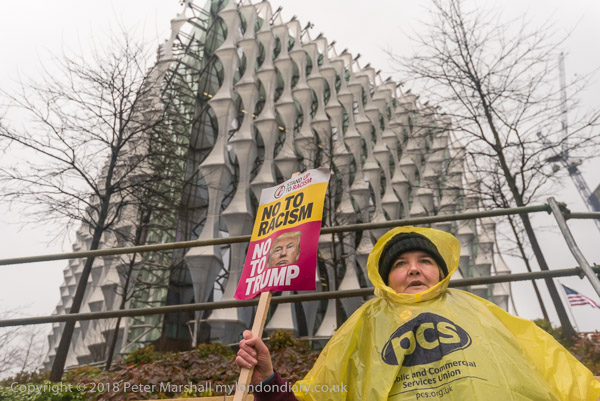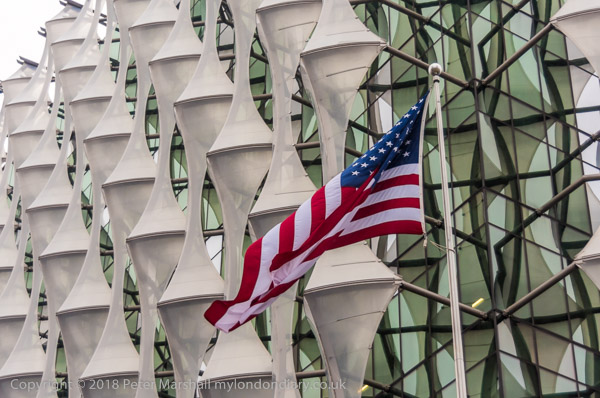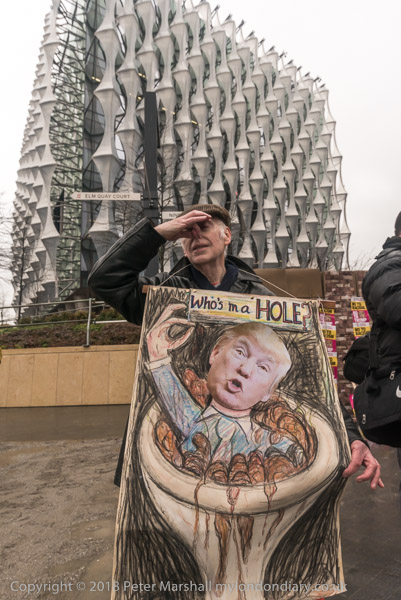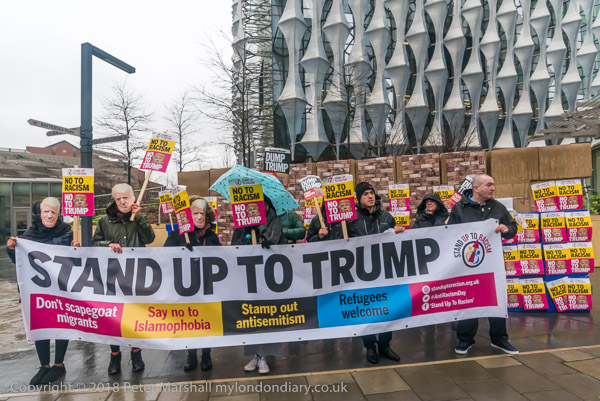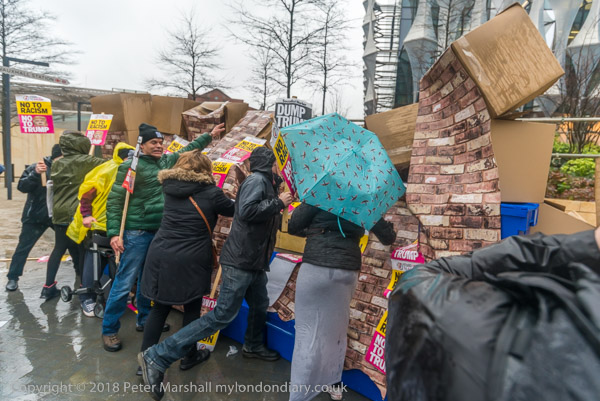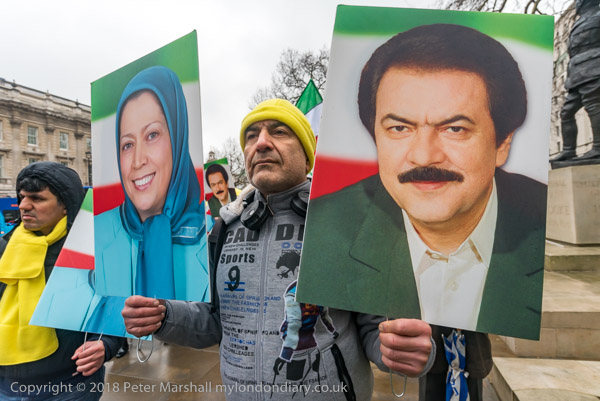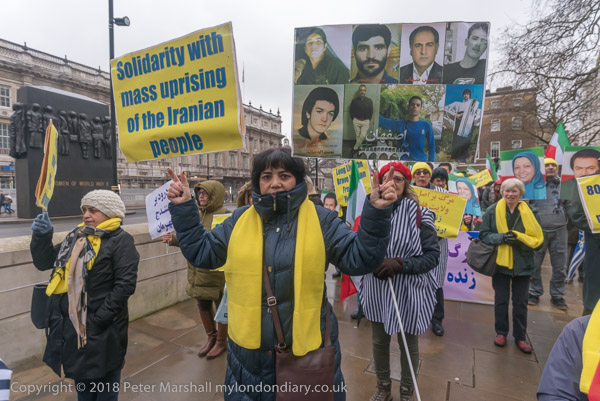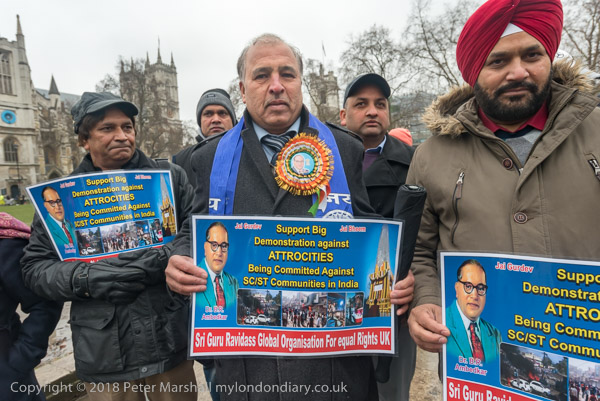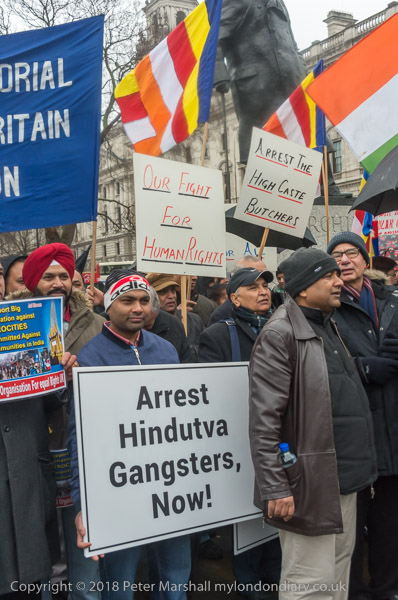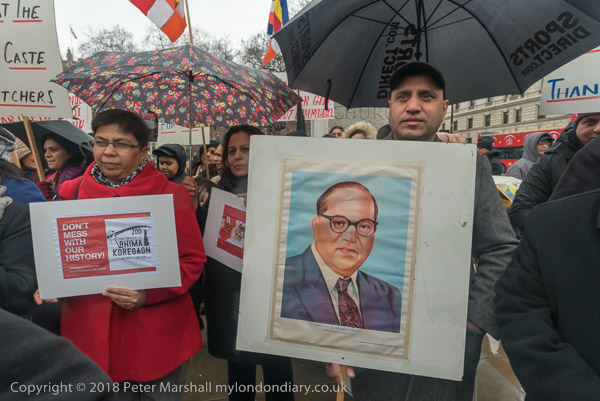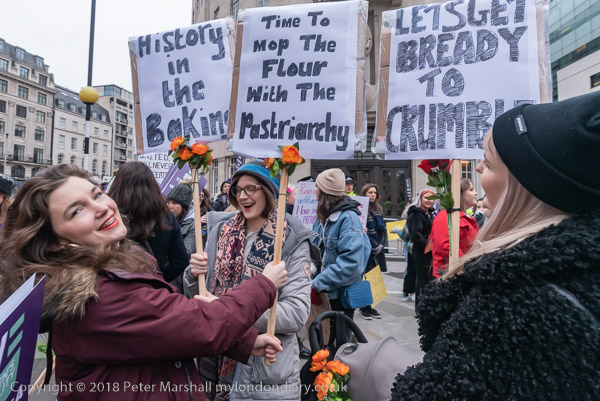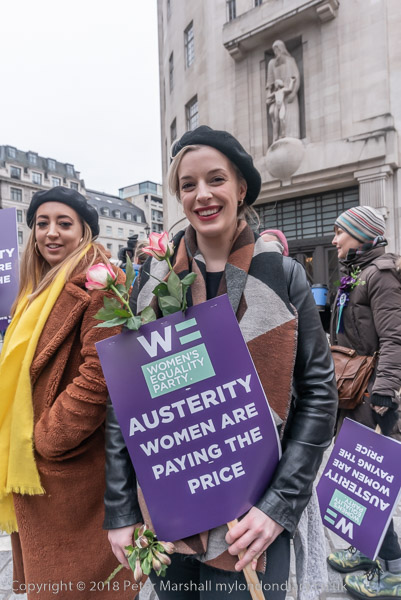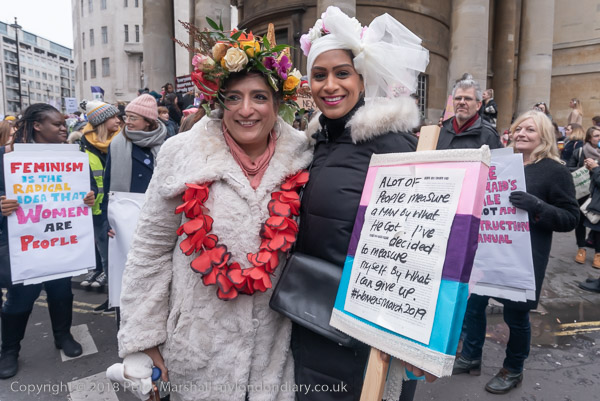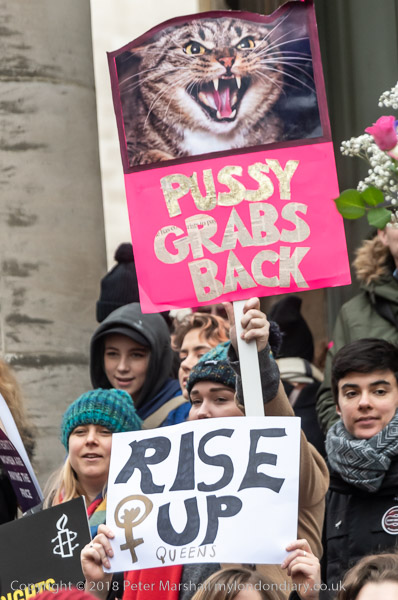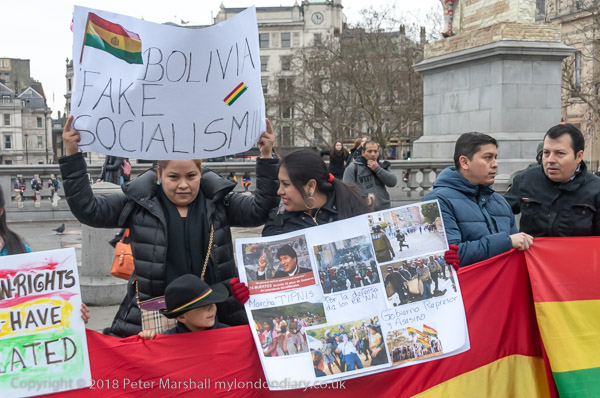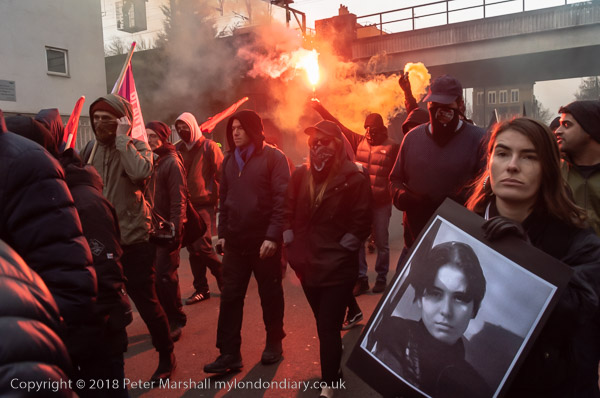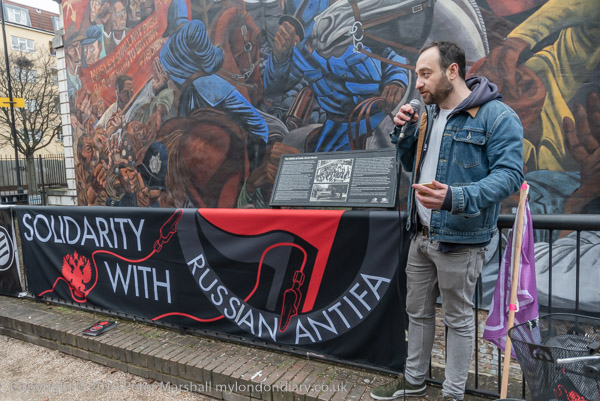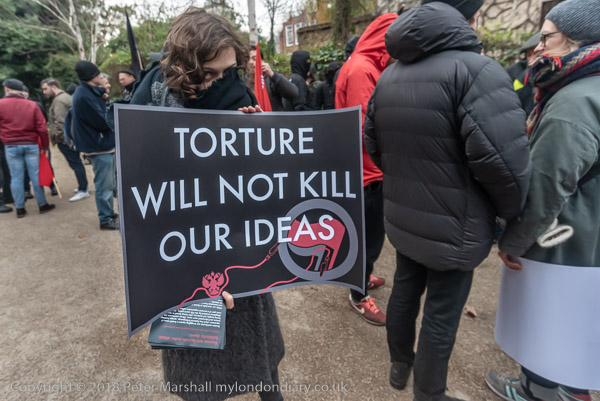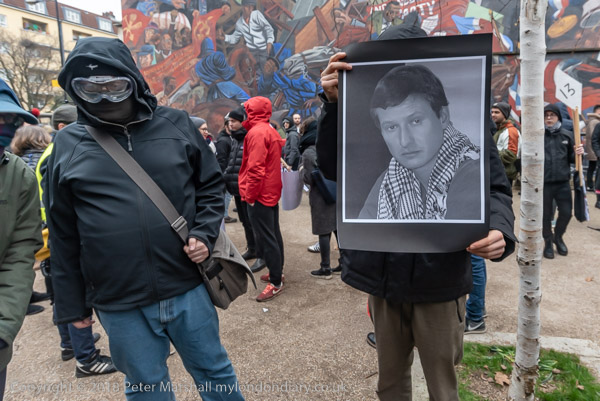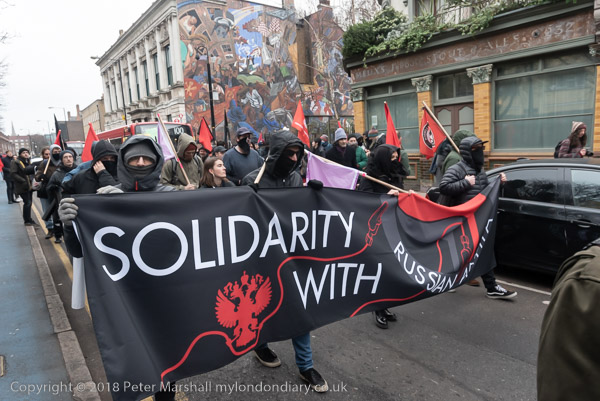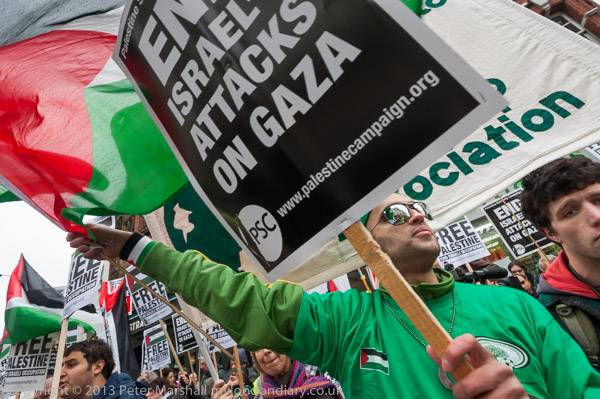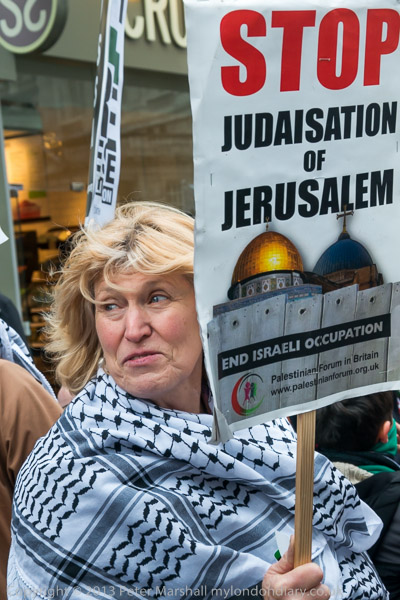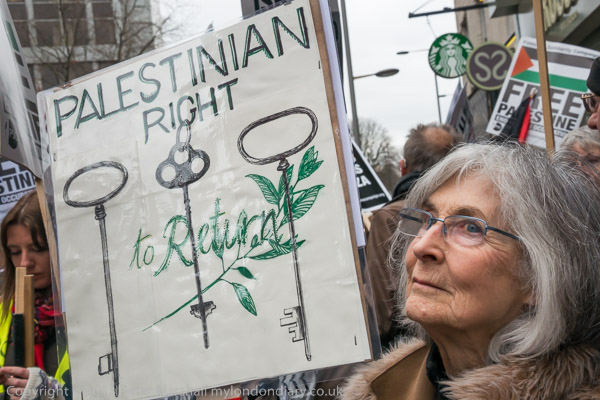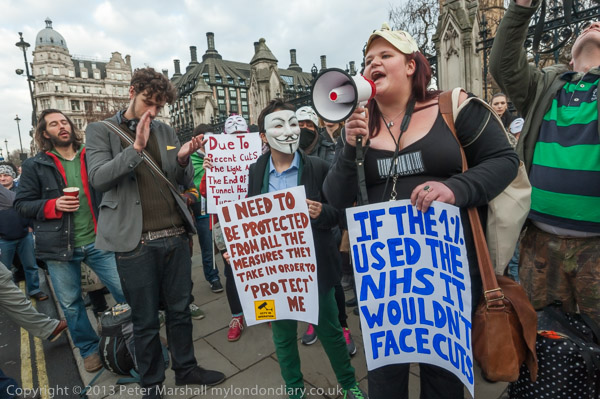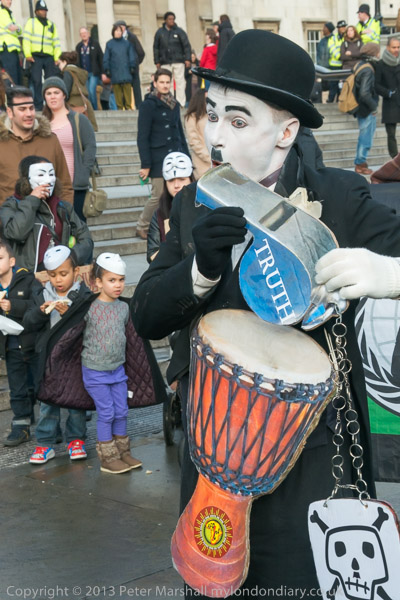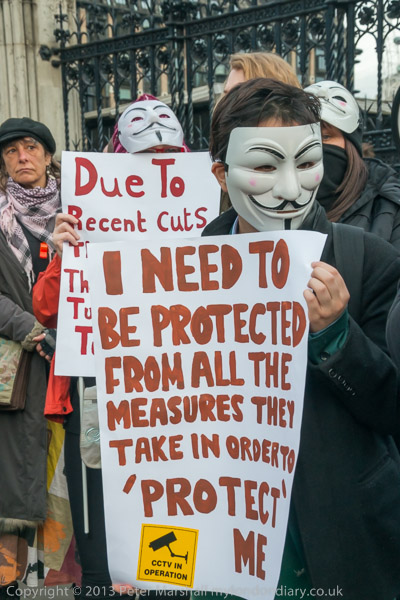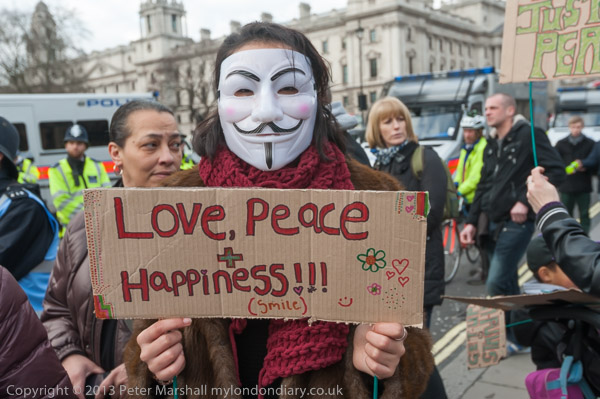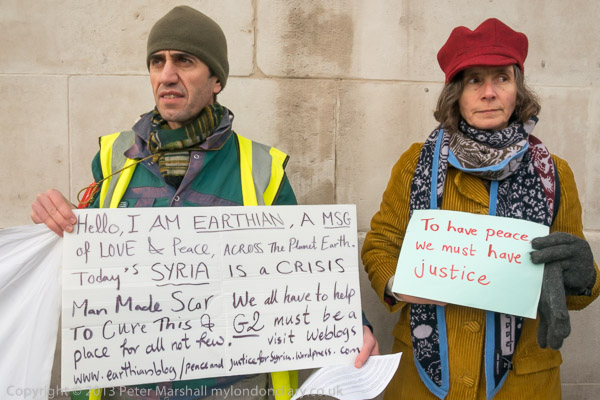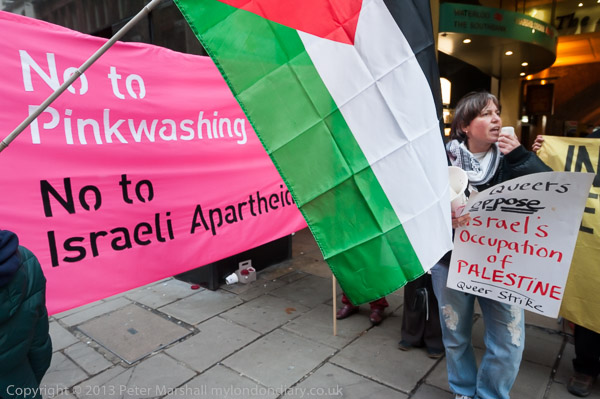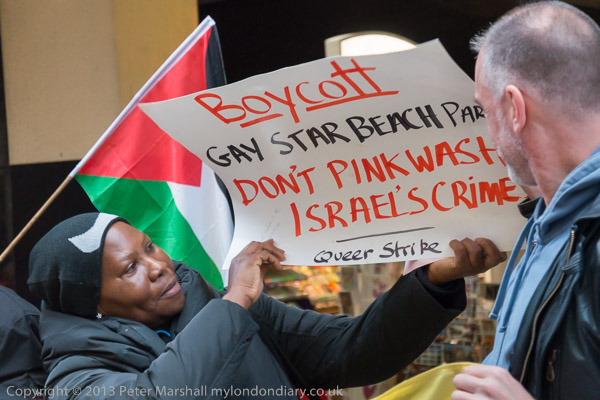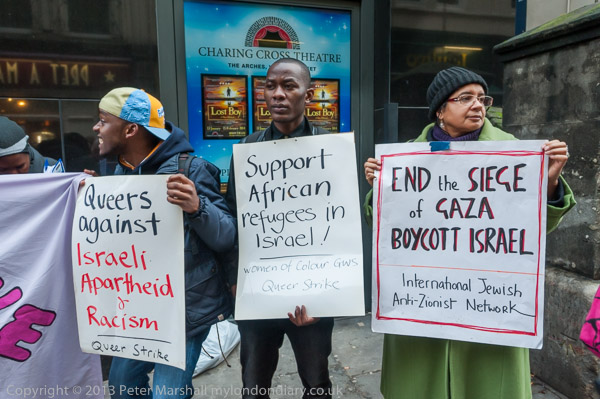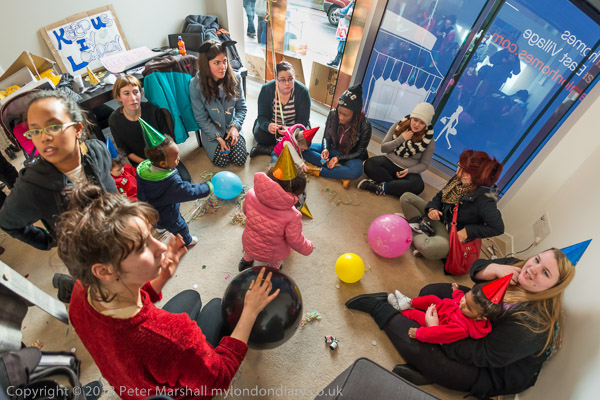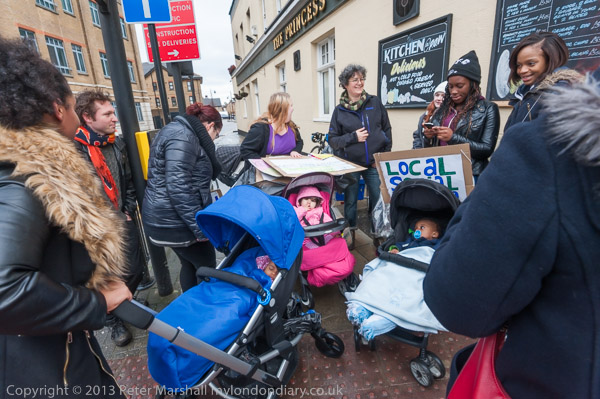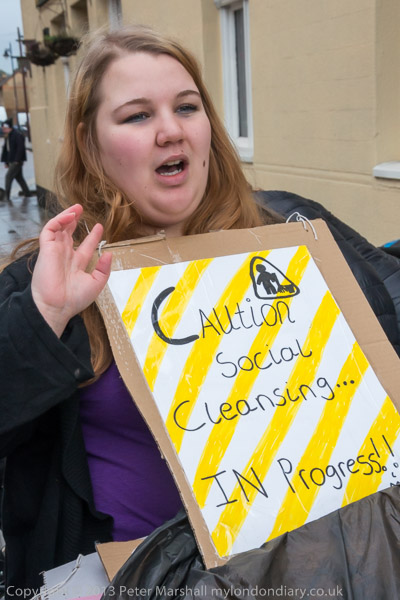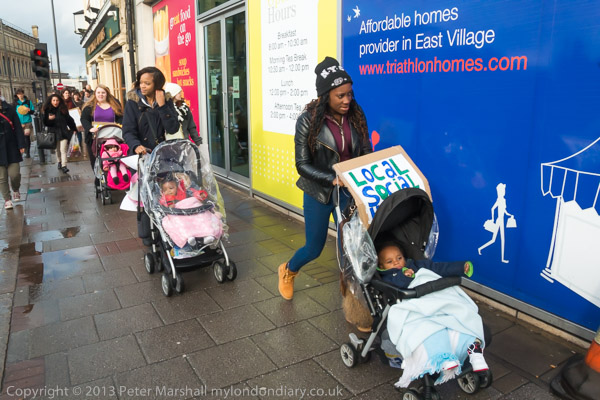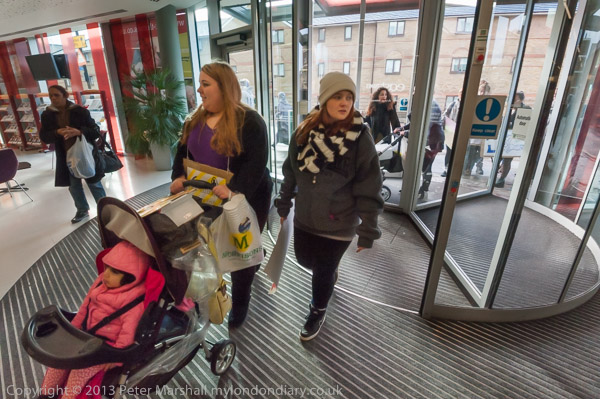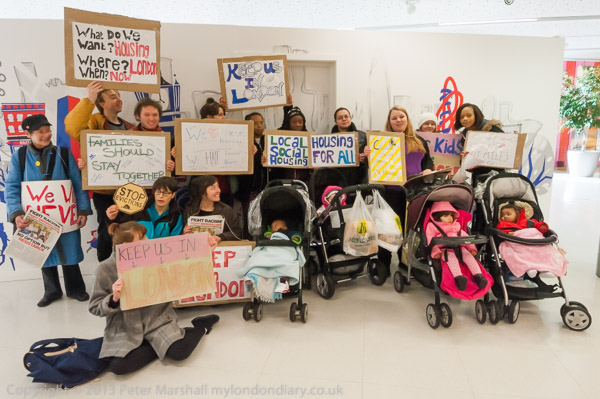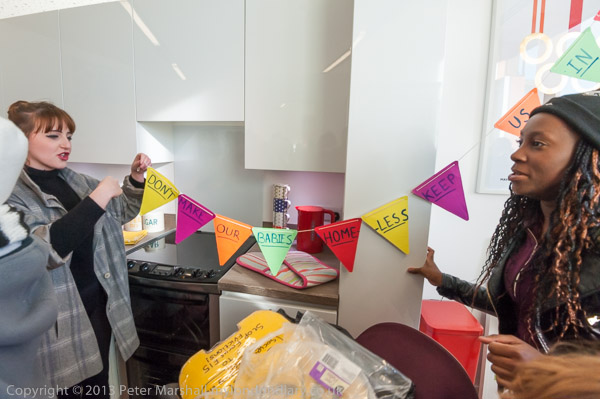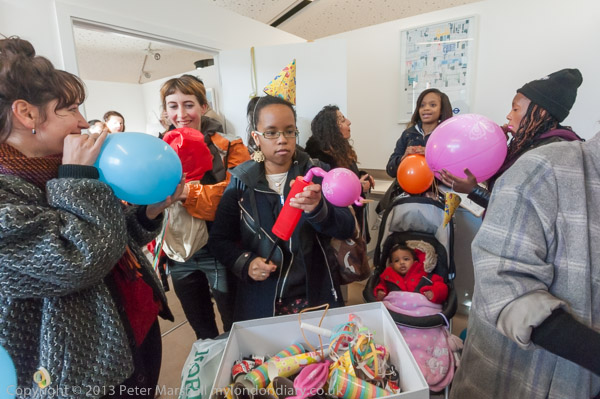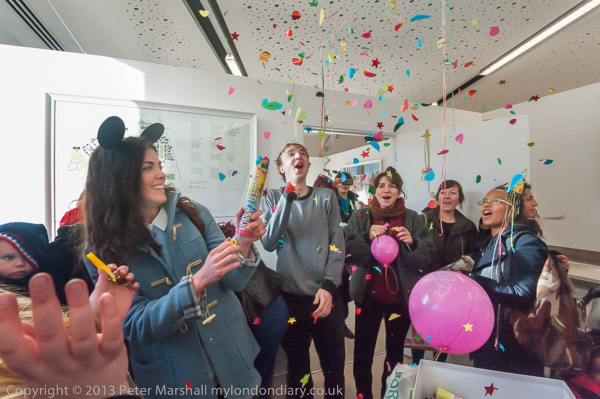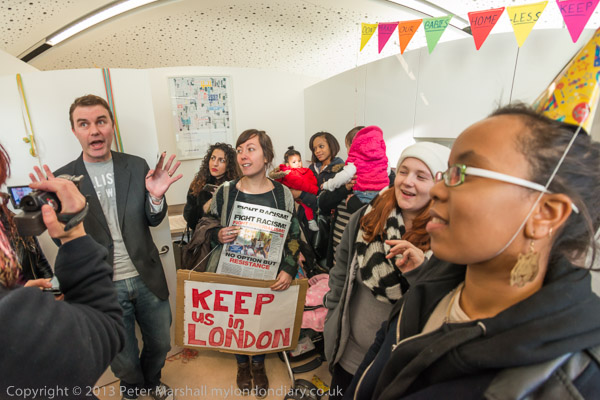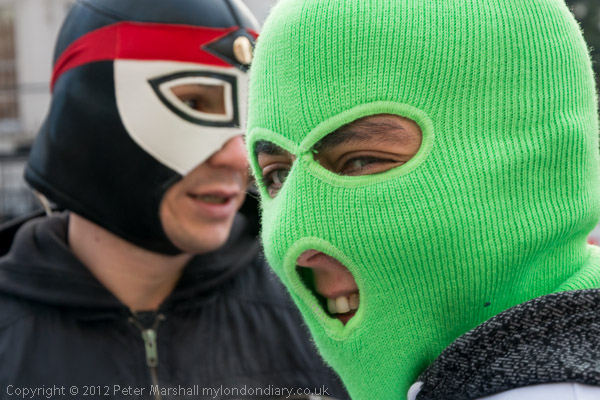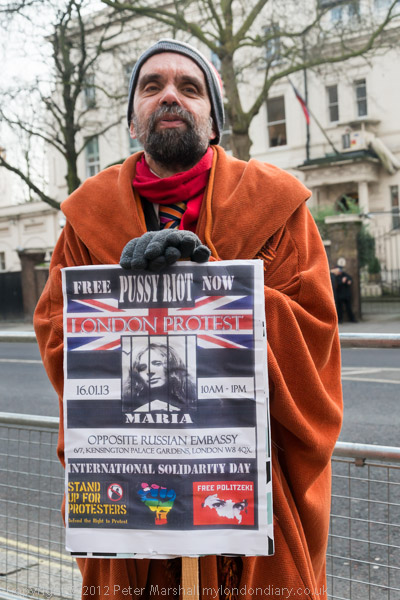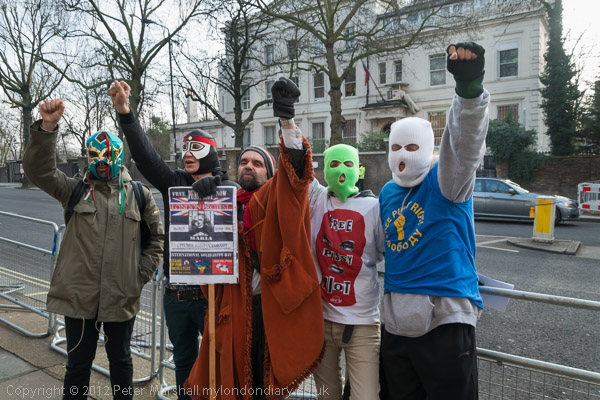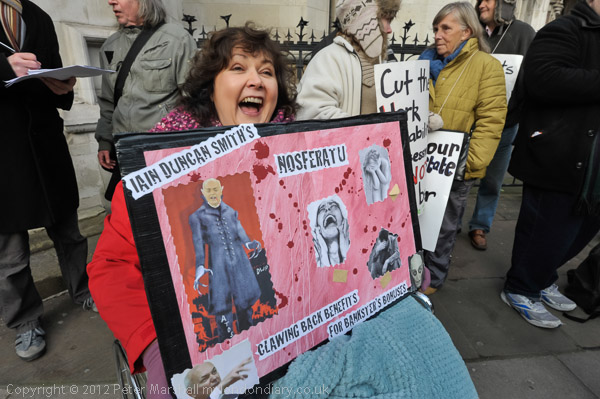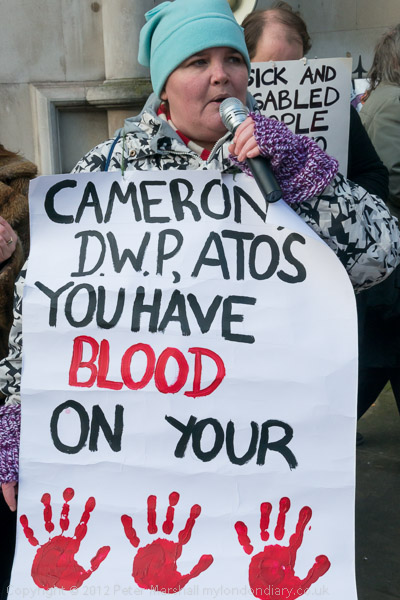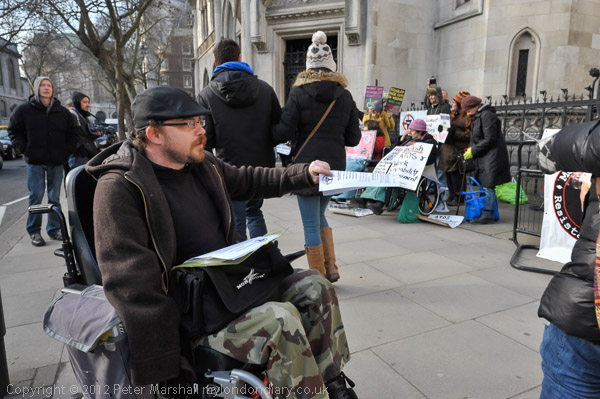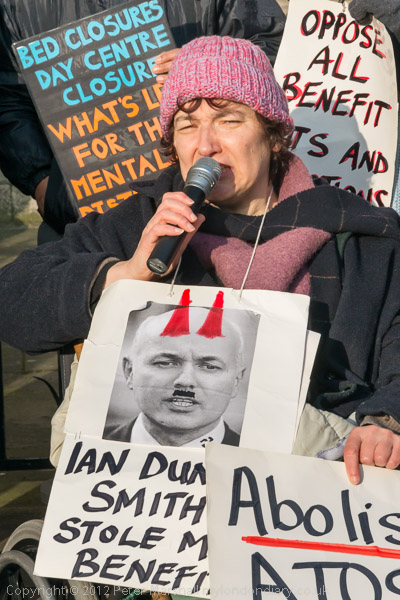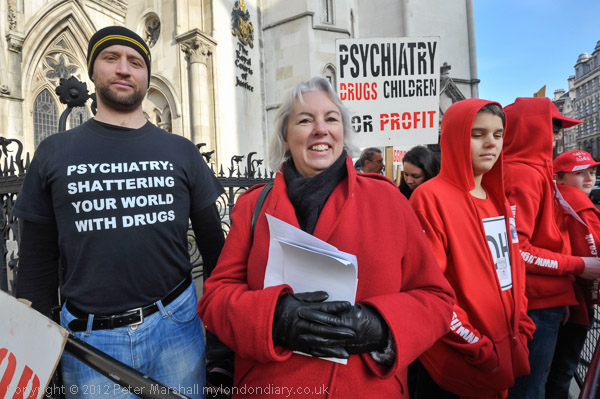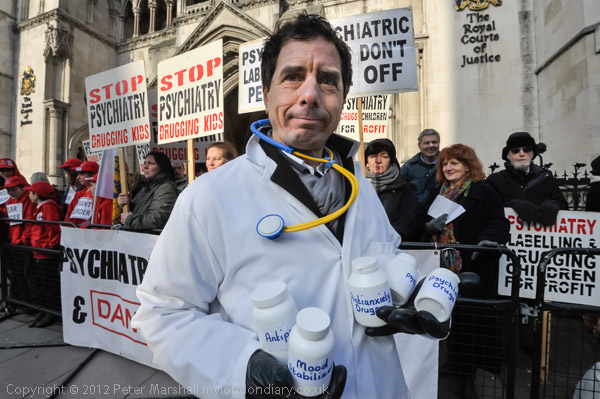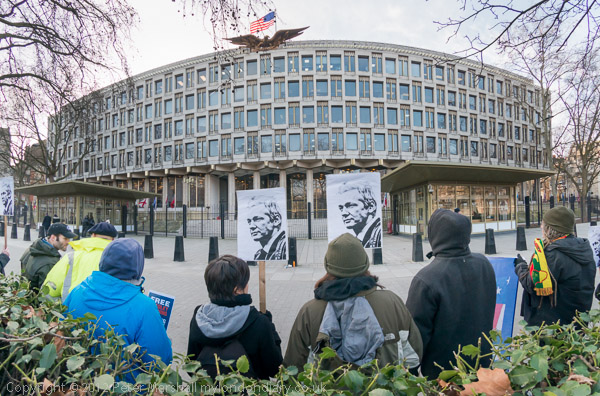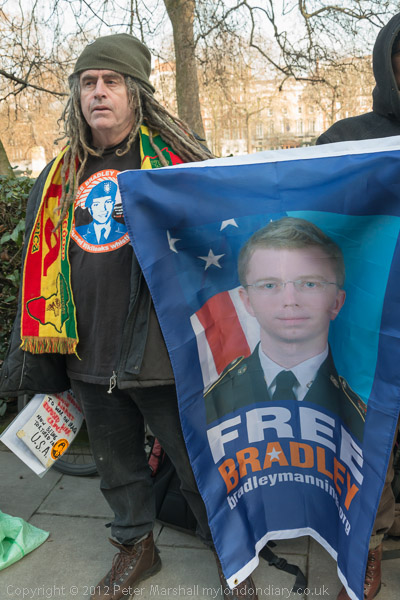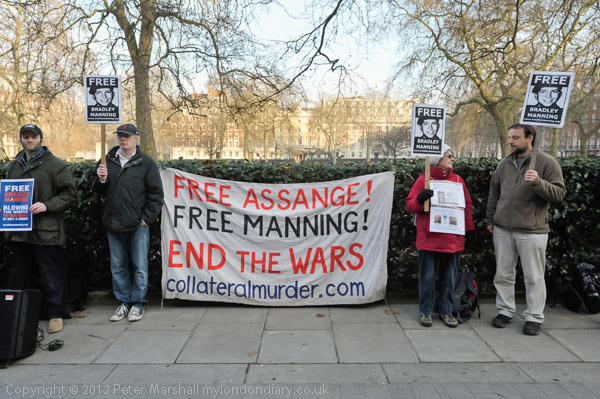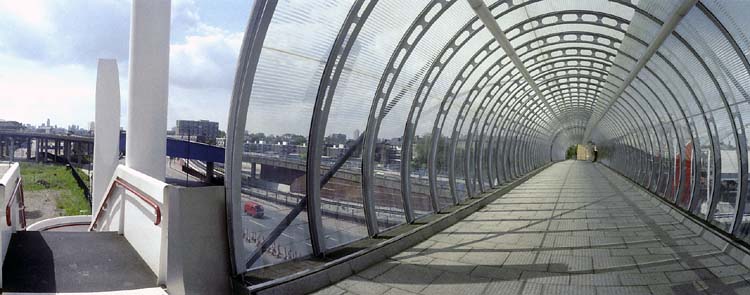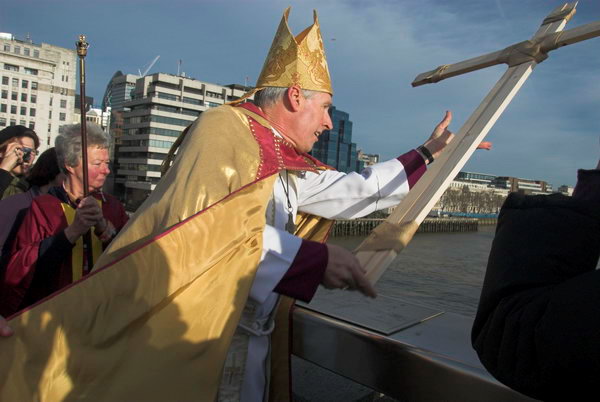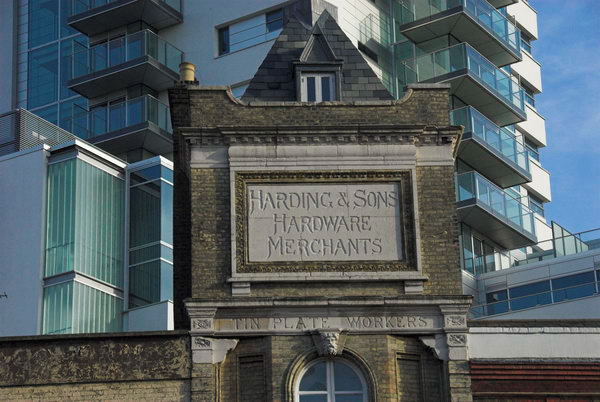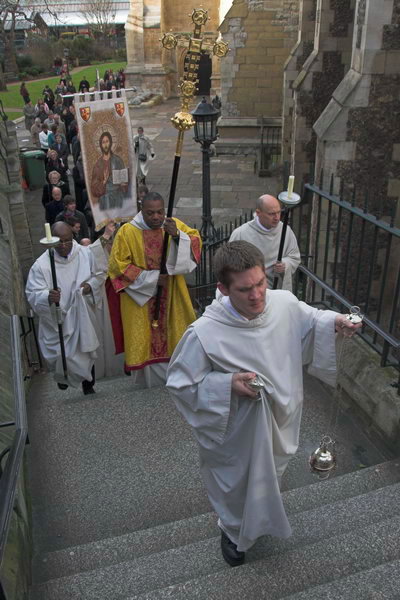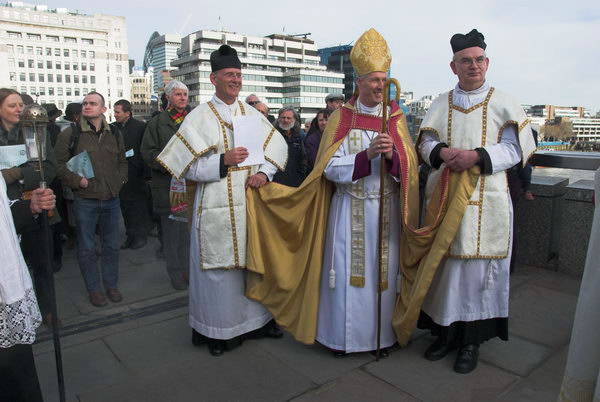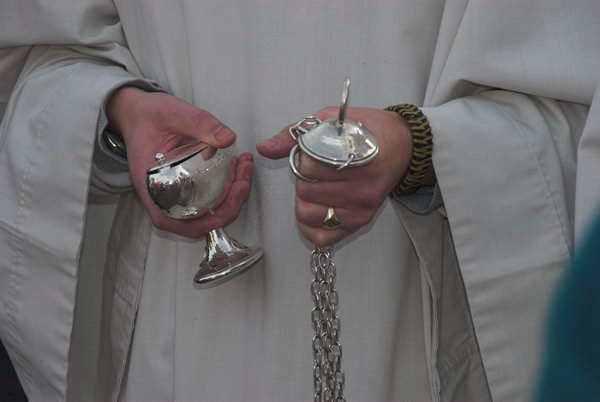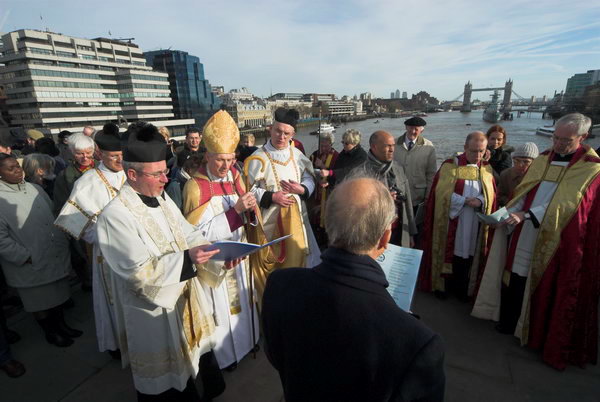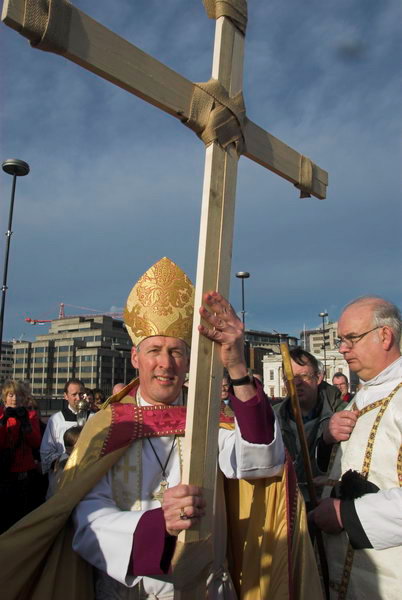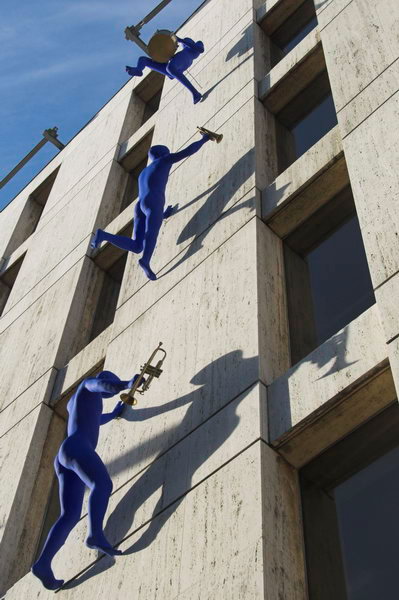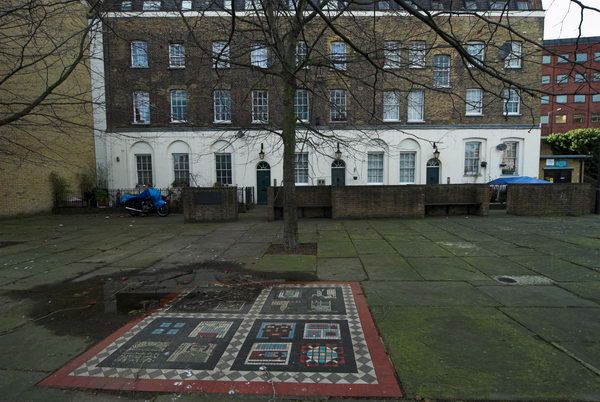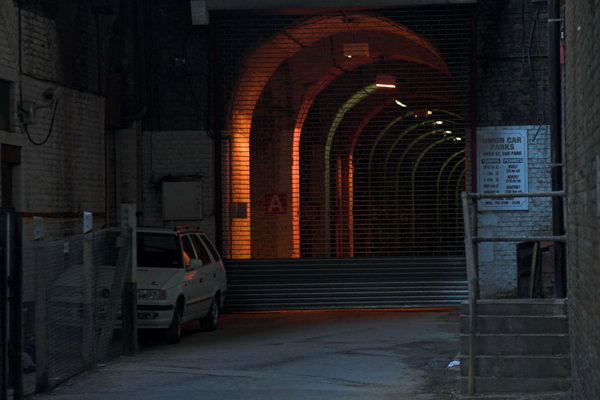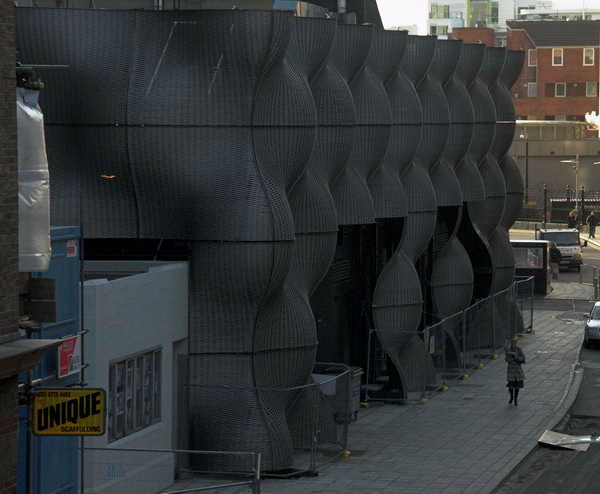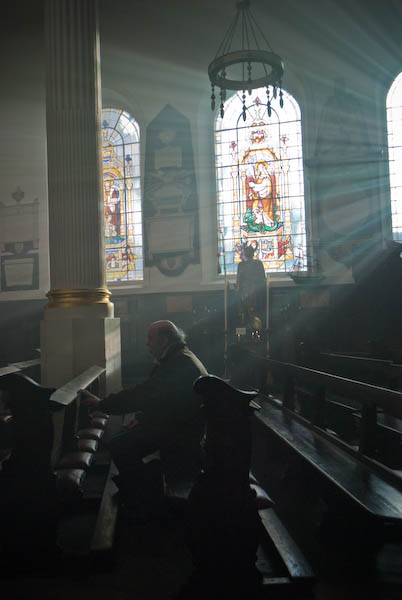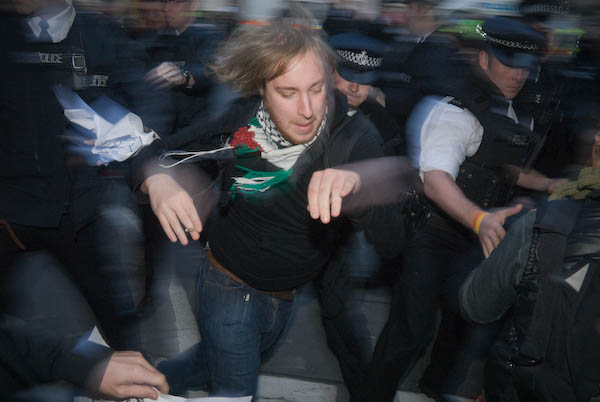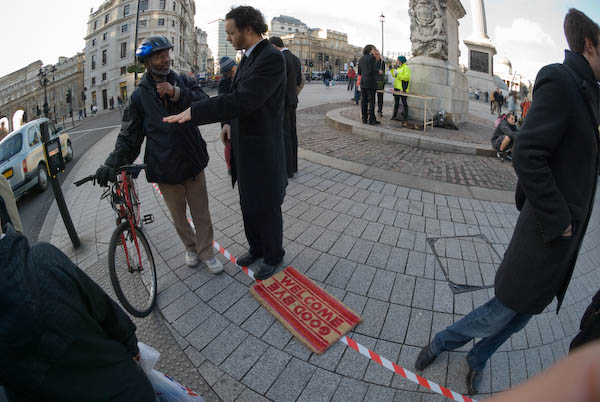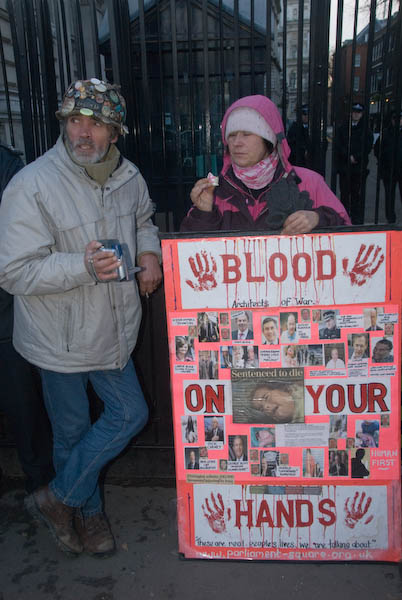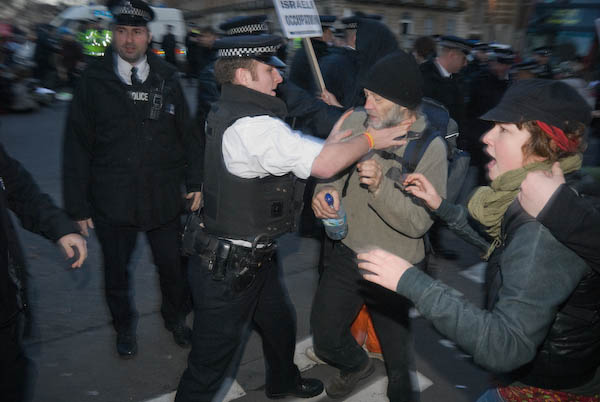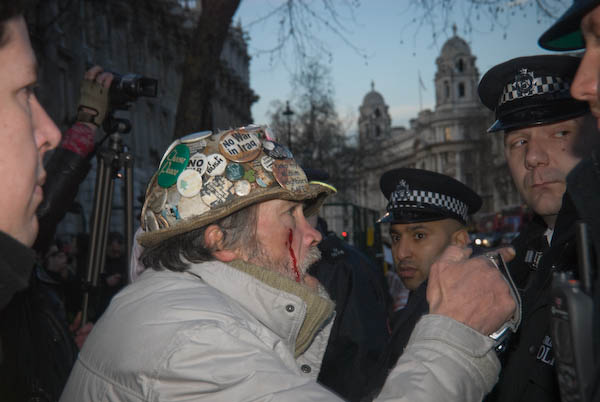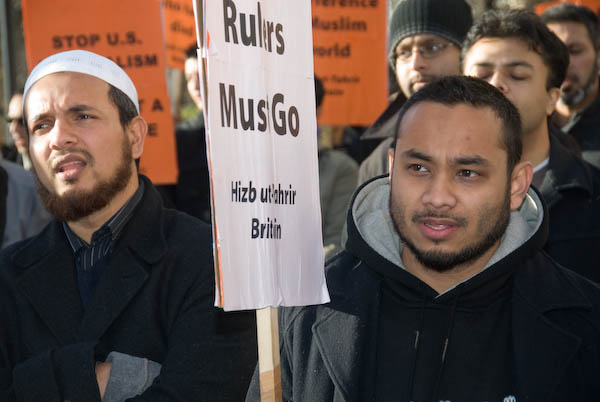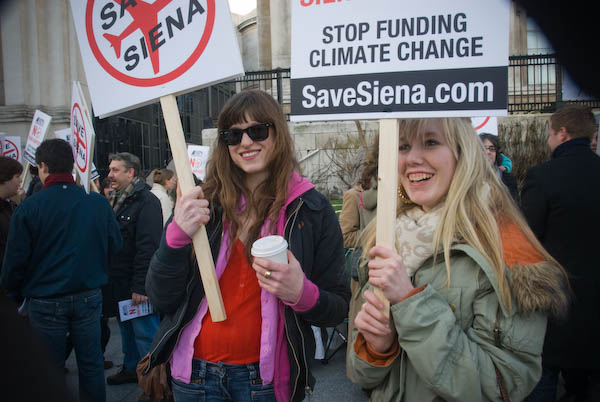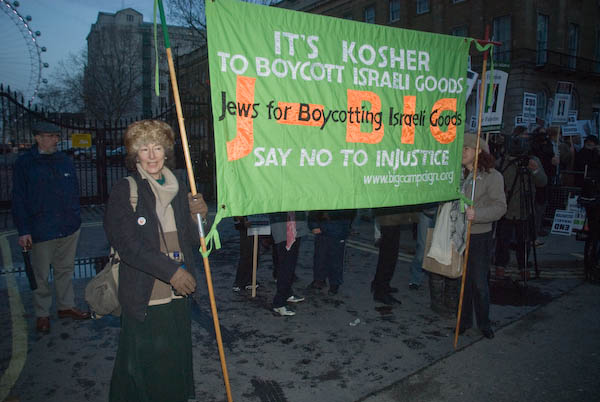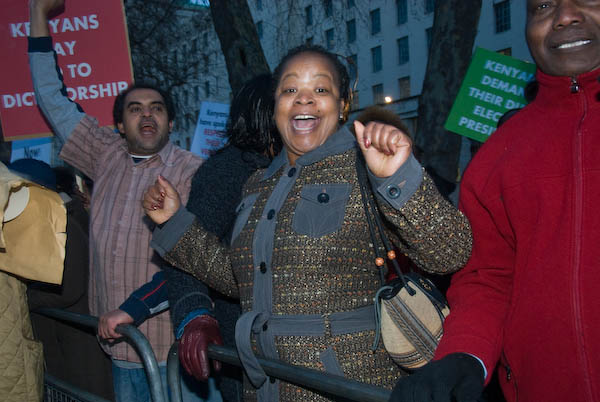Limehouse, Isle of Dogs & Poplar
This post starts where my previous post on the walk left off, on Emmett Street, no longer present, a victim of both the Limehouse Link tunnel and the edge of the Canary Wharf development at Westferry Circus. I think it this was taken just a little further south than the previous picture and the view between buidlings with several cranes is to the luxury flats being built on the Limehouse bank of the Thames.
A little further south on Westferry Road, with the high dock wall at the left and Cascades Tower, designed by the architects Campbell, Zogolovitch, Wilkinson and Gough (CZWG) in the distance ahead. This unusual block of luxury flats built in 1985–88 was the first private high rise block in Docklands. Going down Westferry Road was entering a huge building site – and the graffiti on the bus shelter states WORLDEXIT (though its actually where a bus would take you back into the world.) When built the flats were almost impossible to sell or rent and Tower Hamlets council let them to teachers at £17 a week. Now they are rather more expensive, at around £400 per week for a one bed flat, and selling for around £500,000 and no teachers can afford to live there.
I think the slight rise in the road, which also bends slightly is possibly the former Limehouse Basin entrance and this section of Westferry Road was perhaps what had previously been Bridge Road.
George Baker & Sons (Millwall) Ltd, builders and joiners, were according to the Survey of London only at this site from 1985 until it was cleared in 1987-8. But the name here looks older and this is the remains of a fairly elegant three-storey building, a photograph of which from 1987 is in the Survey of London. It was built on what was then Emmett St in the 1860s for Thomas Dominick James Teighe and Frederick Smith, sailmakers and ship-chandlers, and from 1902 to the early 1980s occupied by Fitch & Son, provision merchants.
Considerable building work taking place close to Westferry Circus, with Cascades Tower visible in the distance.
Sand and gravel works on the north side of the former South Dock Entrance, with a view across the River Thames to Columbia Wharf in Rotherhithe.
A bus stop at left on Westferry Road, the Island Car Service, much needed as the bus service was poor and unreliable and Timber Merchant John Lenanton & Sons Ltd on the corner of Manilla St, with the Anchor & Hope public house part visible at the right edge, and behind one of the towers of the Barkantine Estate. The car service was in the shop at 31 which for many years was Wooding’s newsagents. The Anchor & Hope had been opened since at least the 1820s, and possibly as it until recently stated on its frontage was established 1787. The building is still there though it closed as a pub in 2005. It was extensively refurbished for residential use in 2015 and the ground floor later became a gym.
I walked back north to Ming St in Poplar, part of London’s first Chinatown, and renamed to reflect this in 1938 when many of London’s streets were renamed to avoid confusion – previously it had been since 1820 one of many King Streets. This was part of the Limehouse of Sax Rohmer‘s racist imaginings of opium dens and crime in his 18 book Dr Fu Manchu series, begun in 1913 and continued after Rohmers death by his biographer and assistant Cay Van Ash.
His work brought wealthy upper-class slum-tourists to the area, where they perhaps enjoyed meals in restaurants such as Wah Ying, but they will have found little evidence of Fu Manchu and his team of assassins, human traffickers and drug traders of the dreaded Sci-Fan secret society. Chinatown was one of the more law-abiding areas of the East End, and the Chinese certainly more law abiding than most.
The Peking was another remnant of the Chinatown past, mostly now moved away to Soho, though there is still a Chinese restaurant on the East India Dock Road, along with the Chun Yee Society. Dockland Light Railway trains now run across the bridge in the distance. The building at right with a dome was Charlie Brown’s pub on West India Dock Road. All this is now demolished.
Going east along Ming St takes you to Poplar High St, and on the corner of Saltwell St where the High Street begins you can still see a large white horse on top of a wooden post, though it seems rather smaller now than in my picture, and is closer to the street corner. There had been a White Horse pub on this site since 1690 though I think the building in this picture is probably from the 1920s when it was taken over by Truman’s Brewery. They sold it in 2003 and it was demolished and replaced by a block of flats. According to the Lost Pubs Project, “In 1740 it was, scandalously, run by a Mr & Mrs Howes, both of whom were actually female. ”
The horse was Grade II listed in 1973 and has the shortest listing text I’ve come across: “C18 wooden carving of a white horse on post in forecourt.” The lower part of the sign with the pub name fell down and has been removed, but the horse has been repainted since my picture.
Click on any of the images to see a larger version in my album 1988 London Photos from where you can browse the album.









